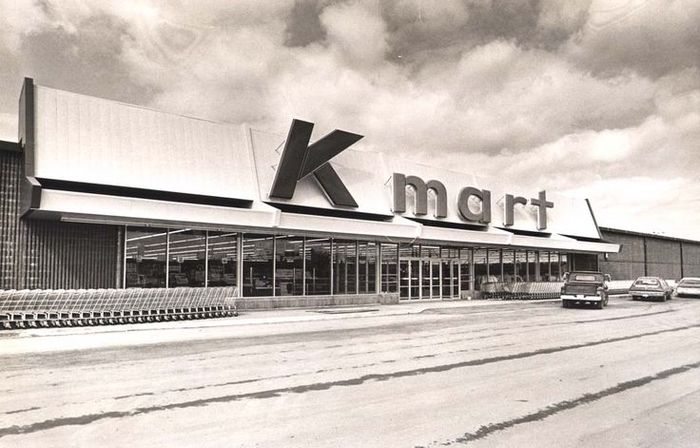
Growing up in along Lake Ontario in Central New York in the 1970s, there were a few Kmarts within reasonable driving distance of our small town. My maternal grandmother was a fan of Kmart, and we would often go shopping with her two one of two stores in the Syracuse, New York area. The closest was the Kmart at Northern Lights Circle in Mattydale. The second choice was Kmart in Western Lights Plaza.
In the mid 1970s, when I became of cash registers and their differences, both of these stores had NCR Class 5 mechanical cash registers. The finest and last of the NCR mechanical cash register line, these machines served Kmart well into the 1980s, long after other stores were already converting to electronic cash registers and early computerized point of sale systems.
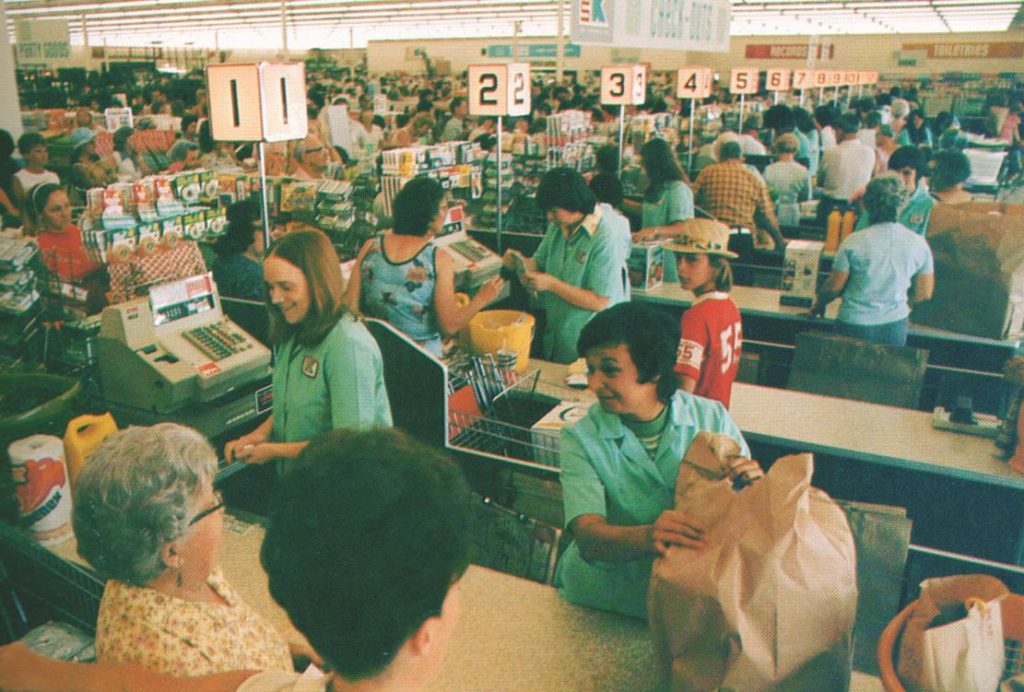
There was a third Kmart in the Syracuse area, on Route 57 in suburban Liverpool. This store was a little newer than the other two, and they did not have mechanical cash registers, but rather early electronic cash registers by NCR. I believe they were NCR 230s, one of the the company’s earliest entries into the Electronic Cash Register space. The NCR 230 was bulky and the printer was loud, but from what I could discern, did everything the mechanical Class 5 registers did, but little more. I don’t believe there were any communication capabilities back to a central processor of any sort.
All of the registers had a sticker on the front to remind the cashier: TYFSAK! It took me a little while to figure out what that stood for, “Thank You For Shopping At Kmart”.
For years I had thought these early electronic machines were actually NCR 225 or NCR 220s, but I can’t find any evidence of there being such a thing. However, once I found a photo of the NCR 230, it looked very familiar.
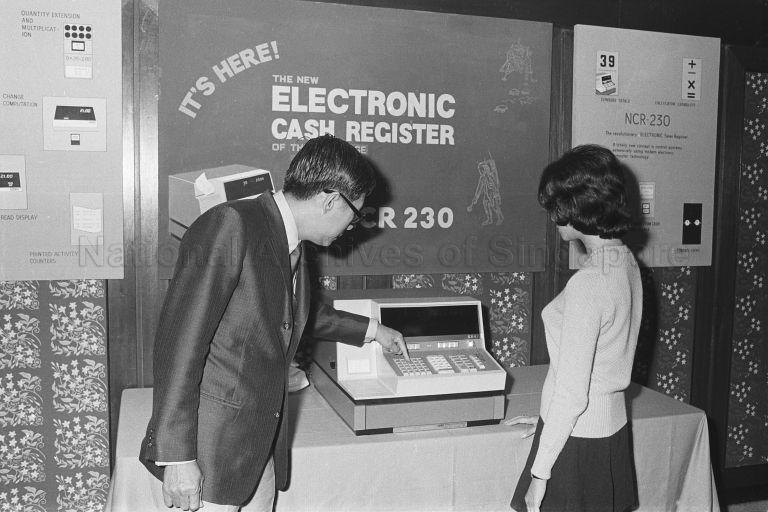
After the closure of the W.T. Grants chain of department stores, Kmart took over the space of the Grants store on outer Washington Street in Watertown, New York. We went to this store for the grand opening in 1977 and it had the same NCR 230 cash registers.
The receipts generated by the NCR 230 cash registers look like they came from a mechanical cash register. As mentioned before, the printers on the NCR 230 were quite loud, resembling the noises coming from the older NCR Class 5 mechanical registers.
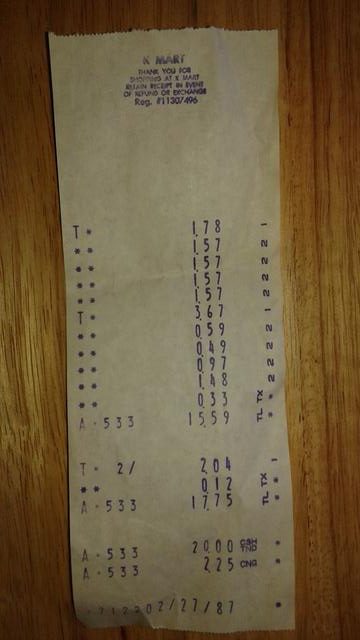
To the casual eye, this receipt looks like it was generated from a mechanical register, but if you look closely, there’s a quantity included on the last item entry, and quantity management was not possible on the Class 5 mechanical registers.
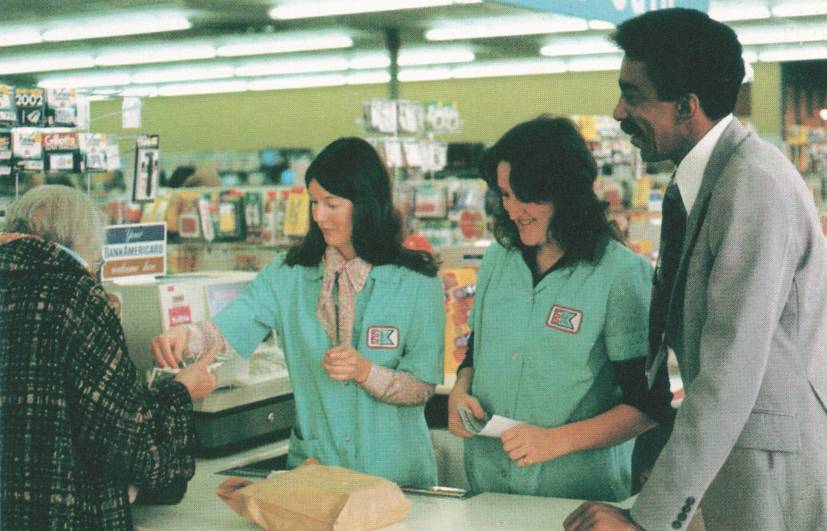
While the stores I visited were using this mix of NCR mechanical and basic electronic cash registers, other stores in the chain were part of a plan to move forward with the computerized inventory management. At the time, Kmart had very basic inventory identification at the registers. While other chains like Ames, Two Guys, Walmart, etc, were using multiple-digit department and stock number information on their mechanical registers, from what I remember, Kmart had a very basic “Key 1”, “Key 2”, “Key 3” approach. Taking a look at the receipt above, the non-taxable items appear to be rung on “Key 2” and the taxable items appear to be rung on “Key 1”. I’m at a loss for finding a photo with enough detail to scope out a keyboard, but my hazy memory recalls up to “Key 10”.
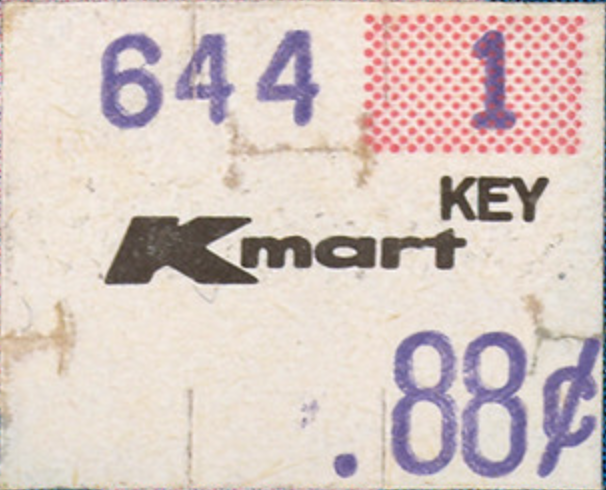
As time marched into the mid 1980s, the vast majority of Kmarts still used this mix of mechanical and early electronic cash registers. In 1984 I found it ironic that I had purchased a printer for my Commodore VIC-20 at Kmart and the sales slip from Sight and Sound had been imprinted with an NCR Class 5 mechanical cash register.
Kmart did not make exclusive use of NCR equipment during this period. Once I went on to college in 1986, I stopped into the Kmart in Warren, Pennsylvania and noticed they were running Data Terminal Systems Model 440 442 cash registers. These registers had what I would call a “non-standard” keyboard on them, in that the “Key” buttons were on the right side of the number pad, and the tender keys were on the left side, which was opposite of any other DTS Series 400 register I had ever encountered (and I had a very keen interest in DTS registers back then). In addition, while every DTS Series 400 stamped cash tendered as “CA” (for example, 20.00CA would appear on the receipt), the Kmart DTS 440s were stamping “CS”. A subtle difference, but I noticed. Evidently, the Seiko EP-101 printer used for the Kmart machines did not have room for an “A” character.
As I started expanding life’s horizons and visiting other Kmart stores, it became apparent that the chain was not keeping up with the trend of moving into a more cohesive, computerized point of sale (and inventory management) experience. Some stores would have NCR 255 registers without scanning. Another store had an IBM 3683 system with really slow scanning.
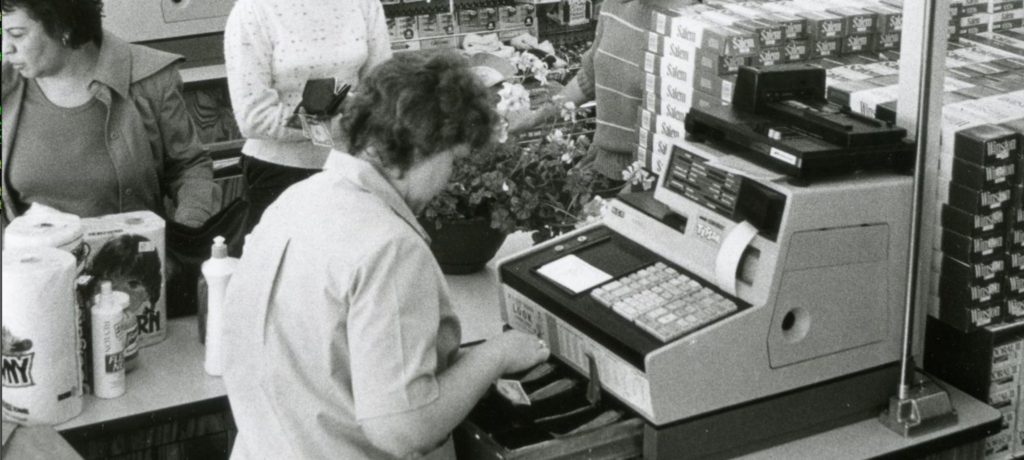
It would be well into the latter half of the 1980s when Kmart would start bringing their point of sale practices into a computerized management system of the times. Kmart began the process with the hiring of a Vice President of Electronic Merchandising Systems in 1985.

The executive said that he was taking a cautious approach and had informed Kmart that he would have to stop deliveries if he does not get paid. Kmart declined to discuss the case.
We were a Venture/Target household in 1970s St. Louis–the ‘po people shopped at K-Mart/Zayre, and the hoosiers (rural ‘po people) shopped at Wal-Mart (which you only saw referred to in K-Tel/Ronco TV ads on the edge of the broadcast area…St. James rings a bell as an early store. Anyway, grandparents (in Chicago) shopped at K-Mart–checking out there felt more like a dime store (no inventory capabilities) than Venture/Target. I want to say they had either DTS or TEC (maaaybe) Also think there were 10 Keys (Key 1 was general merchandise, I think there was a key for Photo, a key for Books (maybe corresponding with leased departments). They also ripped off clothing/shoe tags for inventory control as I recall.
I was a upfront manager for Kmart. Worked there from 1998-2002, starting out as a cashier.
From what I remember about Key numbers, it was a basic department classification. The first store I worked at used IBM 4683s with what I assume was General Sales Application. We still used Key numbers to identify items scanning as not-on-file, or when the backoffice computer went offline.
We transitioned to Supermarket Application in late 1999, just before the conversion to SurePOS terminals company-wide. By that time I was the upfront manager in a different store that was using NCR terminals. When we converted to Supermarket Application, key numbers were changed to department numbers.
Before laser scanners, the Key numbers could make or break a department manager. I made a sizable Automotive dept. purchase at a front register and noticed that the checkout operator had rung up everything on Key 1 out of sheer indifference. As a department manager, I showed it to the Automotive manager. Hoo-boy.
I worked for Kmart in the 70s and 80s. When NCR service came through my store, I often struck up conversation with the man, busy with ink and oil.
One of them was quite knowledgeable about the Class 5s and their aborted place in computerized retail sales. I’m sorry that I forgot almost everything he talked about but I do recall him saying that Kmart paid about $10k per machine.
It was mesmerizing to watch the Class 5 read the previous day’s sales of about 20 departments and simultaneously print the results on receipt tape.
The quiet of the store before opening was perforated by each reading and you could pretty much tell where she was in the store from the noise that the registers made.
Later (1980s), the Class 5s made much, much louder noises. The sound of them being dropped into a 40 yard dumpster from a forklift was memorable. This was my introduction to the fleeting life of cutting-edge technology.
TYFSAK….. By the time I worked at Kmart in 1986 the acronym was TYFSOK: thank you for shopping OUR Kmart.